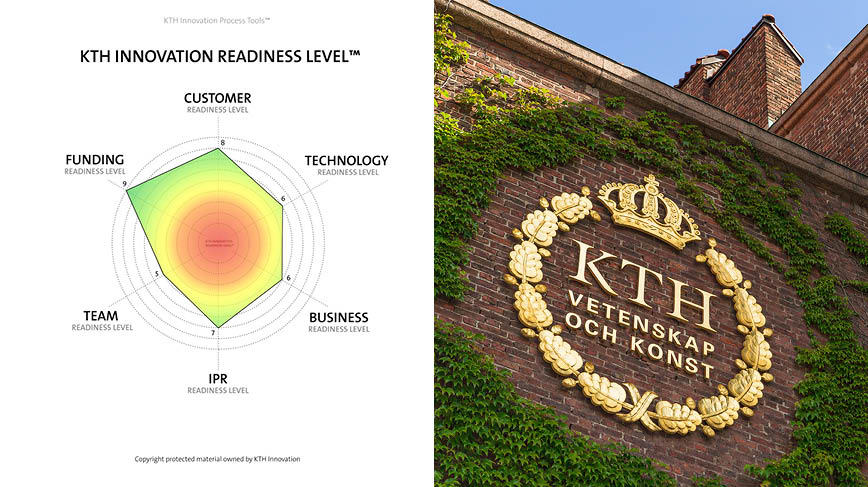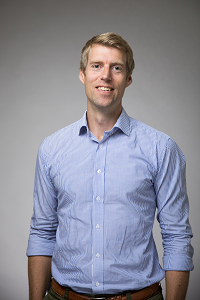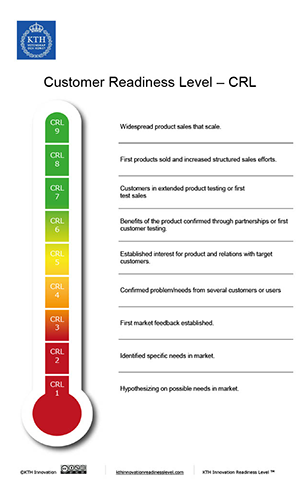KTH's Innovation model spreads worldwide

Over one hundred organizations worldwide use KTH Innovation’s model for idea development, the KTH Innovation Readiness Level Model. Now, a Creative Commons license will make the model even more accessible. Among the users are Imperial College, Vinnova, Aalto University and the Technical University of Denmark (DTU).
In the 1970’s, NASA developed their Technology Readiness Levels (TRL) to make the development of spacecraft more efficient. During a trip to Silicon Valley in 2008, the model caught KTH Innovation’s attention. Perhaps it could be useful in the support of new ideas from KTH.

- A challenge you face in every first meeting is the discussion around “how far have you developed your idea” says Gustav Notander, Business Development Coach at KTH Innovation. The answer can be anything from “we’ve been researching this for 10 years”, to “we have almost developed a prototype”, but it’s hard to get a common understanding of what that really means. We figured that the TRL levels could be a good tool to get an objective assessment that works no matter if you develop a nuclear power plant or a dating app.
Saw the potential
The TRL model is a scale from one to nine, where one means that you have a very early-stage idea or a research result that seems interesting, and nine means your innovation is fully functioning and implemented on the market. Back in Sweden, KTH Innovation started using the model in meetings with students, researchers and employees at KTH who had gotten in touch with a new idea or research.
- We noticed this was a good way of discussing how far along they were in their technology development, and pretty soon we found that the scale from one to nine was very effective, says Gustav Notander. We realized we could implement this method on other areas as well.
Six areas of innovation development

Since 2013, the model covers the six areas that KTH Innovation has identified as the most important to focus on for all types of new ideas. In addition to technology, it now includes levels for customer, business, intellectual property, team and funding. KTH Innovation’s business development coaches use the model daily.
- The model gives you an external point of reference that helps you assess your status, and figure out what your next step is, says Gustav Notander. You get a clear overview of all six areas, so you can feel confident that you’ve chosen to the right thing to focus on, without losing track of the other areas.
Integrating equality, diversity and soon sustainability
Each level has clear achievements required to move on to the next step. Since the first version of the model, KTH Innovation reworked the definitions several times, for example to include equality and diversity in the team level. The next step is to include sustainability in several different levels.
- We don’t want to add sustainability as an individual level, but want to include it in the existing areas, primarily in the business level, but also in technology and customer, says Gustav Notander. Just as we believe a high performance team needs equality and diversity, we believe it will become impossible to create a successful, economically sustainable and scalable business model if you haven’t taken other aspects of sustainability in account as well.
Measures progress
The KTH Innovation Readiness Level Model does not measure an idea’s quality or potential, but its progress on the journey from idea to market. Gustav Notander says:
- Using the model is no guarantee for success, but it will give you a higher likelihood of getting to your goal while having used fewer resources. Additionally, there is less risk of getting a nasty surprise when you finally reach the market. For us as a support organization, we also find a lot of value in better structure and quality in our work.
Used worldwide
In February 2021, KTH Innovation released the model under a creative commons license. In the first week, over 100 organizations registered to access the material. Among the users are UK's Imperial College, Denmark's DTU, Finland's Aalto University and the Swedish Energy Agency. Recently, Vinnova introduced the model for the 29 incubators in the national incubator program. The purpose is to create a common and improved platform for evaluation and assessment of the maturity of the companies in the program.
- This model captures interesting dimensions to measure progress, says Kjell-Håkan Närfeldt, Chief Strategy Officer at Vinnova. The incubators support 700 companies on different levels of maturity, and in the past, this has made evaluating progress and maturity of the portfolio difficult. Implementing the IRL model feels like a large and important next step to develop the incubator program.
Gustav Notander wraps up:
- There aren’t many ways to objectively measure how far an idea has developed available today. We are one of the few who have a system, and that’s one of the reasons why the model has become so popular. Here, KTH is in the forefront. We want the model to become industry standard and be used by more organizations around the world.
By: Lisa Bäckman
Access the KTH Innovation Readiness Level Model
At www.kthinnovationreadinesslevel.com you can read more bout the model and access the material.
Questions
Contact KTH Innovation on innovation@kth.se .

